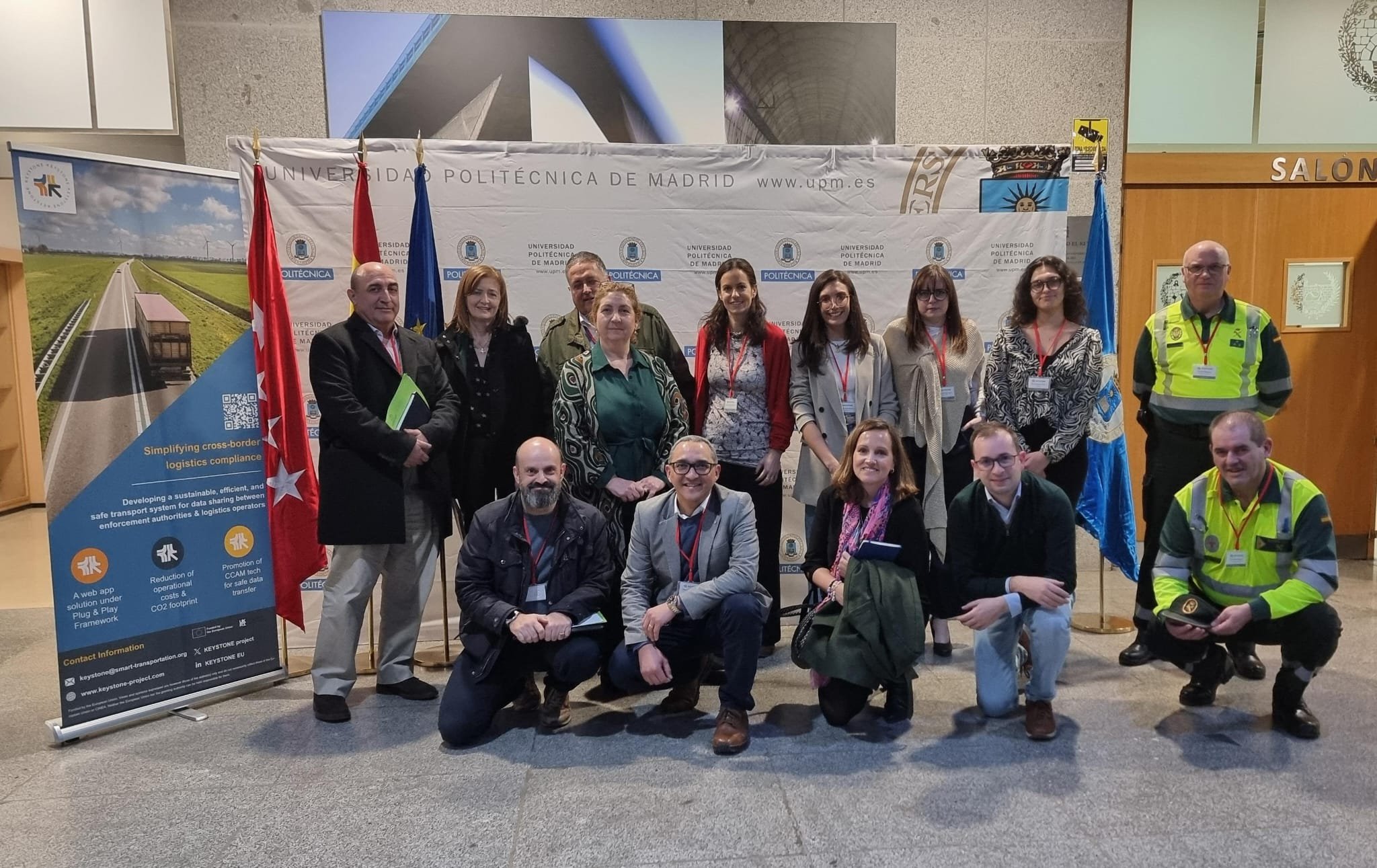KEYSTONE Reveals Stakeholder Priorities and Expectations for Logistics Digitisation
First Focus Group Discussion as a part of the Steering Committee meeting at the CIM Interporto di Novara headquarters on 28 November 2023
In the logistics and transport field, stakeholders are navigating a complex landscape defined by regulatory fragmentation and technological challenges. Throughout its first year, the KEYSTONE project engaged with a large number of stakeholders from the European transport and logistics ecosystem to understand their critical priorities and expectations towards a more integrated, efficient and digitally resilient logistics sector. The stakeholders consulted include not only logistics and freight terminal operators but also key enforcement authorities, which is one of the defining characteristics of KEYSTONE – bringing together industry and enforcement in a collaborative dialogue to advance successful digitisation for the future of the entire sector.
Second Focus Group Discussion at the Transport Research Centre (TRANSyT) of the Universidad Politécnica de Madrid (UPM) on 25 January 2024.
KEYSTONE addresses the existing regulatory fragmentation, enhances standardisation and fosters digital transformation through incentivisation and user-friendly solutions. These are some of the key findings of the first Work Package (WP) of the project, which officially ended in May 2024 after 12 months of work to define the project’s state-of-the-art and gap analysis:
Addressing the fragmented regulatory environment: Stakeholders highlighted the urgency of addressing fragmented rules governing electronic documents and processes. The current framework imposes barriers to effective data exchange between enforcement authorities and businesses, impeding operational efficiency.
Role of eFTI in standardisation: The introduction of the Electronic Freight Transport Information (eFTI) framework aims to standardise data models, facilitating smoother exchange between businesses and authorities. However, concerns persist as businesses are not, currently, obligated to adopt digital documents, potentially perpetuating reliance on paper-based alternatives.
Importance of pilot projects: Stakeholders advocate expanding the number of pilot projects to gather crucial insights for technological implementations and potentially refining regulations. Governments and EU entities are urged to leverage findings from these projects to foster innovation and potentially adapt regulations.
Government as enabler: National governments play a pivotal role as enablers of digital transformation within the transport and logistics sector. Their responsibilities extend to harmonising standards, reducing bureaucratic barriers, and incentivising digital adoption. Regulations must address challenges such as interoperability, security, and cybersecurity whilst aligning with broader EU policy goals.
European mobility data space: There is support for creating a standardised European mobility data space to promote collaboration across initiatives and member states. This approach prioritises collective benefits over individual platforms, offering small and medium-sized enterprises (SMEs) protection and growth opportunities within the sector.
Governmental support for standardisation: Governments are urged to facilitate the establishment of data spaces and promote standardisation in transport and logistics. Enhancing digital literacy among logistics professionals, including SMEs and truck drivers, is critical for the widespread adoption of digital practices across the sector.
Technological and data requirements for KEYSTONE
Alongside the key challenges highlighted above, informants also outlined a suite of technological and data requirements for any solution developed. These include:
Focus on standardisation and incentivisation: KEYSTONE prioritises interventions that enhance standardisation across transport, technology, and regulatory spheres. Rather than developing new digital tools, stakeholders emphasised incentivisation strategies to encourage the widespread adoption of digital documentation, particularly for SMEs.
Bottom-Up approach for connectivity: Adopting a bottom-up approach, KEYSTONE seeks to connect digital islands and key architecture to ensure seamless interoperability. Trust is maintained through robust data protection mechanisms, prioritising user-friendly solutions and secure connections that protect data transfers and communication.
Mobile and web-based applications: Stakeholders advocate for mobile- and web-based applications within KEYSTONE to integrate advanced tracking technologies and automated data management tools. These solutions must be flexible and scalable to meet diverse needs across the logistics sector.
Dashboard monitoring and data capture: Essential data points such as driver qualifications, transport details, inspection records, and real-time tracking need to be monitored through a dashboard. This enables businesses to track shipment progress and compliance with certificates, accessible to enforcement authorities.
Simplified access and integration: Proposed solutions include a user-friendly IT platform akin to Amazon, featuring a free-to-use front-end for operators to scan and submit documents via optical character recognition. Seamless integration with existing systems and APIs facilitates data capture for invoicing, packing lists, and transport plans.
By addressing these priorities and expectations, the KEYSTONE project aims to foster innovation and growth in transport and logistics while ensuring compliance with regulatory standards across Europe. The work performed within WP1 feeds directly in all future work of the KEYSTONE project, as it laid the baseline for the developments to ensure the highest possible acceptance of the end users (enforcement authorities, logistics operators and freight terminal operators).



